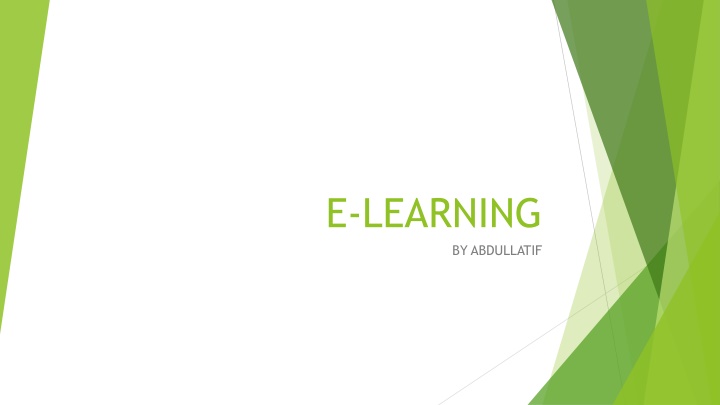
E-Learning
Explore the benefits and drawbacks of e-learning, a digital approach to learning and training delivery. Discover how it offers flexibility, accessibility, and interactive experiences while facing challenges like security and assessment authenticity.
Download Presentation

Please find below an Image/Link to download the presentation.
The content on the website is provided AS IS for your information and personal use only. It may not be sold, licensed, or shared on other websites without obtaining consent from the author. If you encounter any issues during the download, it is possible that the publisher has removed the file from their server.
You are allowed to download the files provided on this website for personal or commercial use, subject to the condition that they are used lawfully. All files are the property of their respective owners.
The content on the website is provided AS IS for your information and personal use only. It may not be sold, licensed, or shared on other websites without obtaining consent from the author.
E N D
Presentation Transcript
E-LEARNING BY ABDULLATIF
WHAT IS LEARNING eLearning, or electronic learning, is the delivery of learning and training through digital resources. Although eLearning is based on formalized learning, it is provided through electronic devices such as computers, tablets and even cellular phones that are connected to the internet.
WHAT ARE THE ADVNTGES AND DISADVANTGES OF E-LEARNING 1. It is a very efficient way of delivering courses online 2. Due to its convenience and flexibility, the resources are available from anywhere and at any time. 3. You are able to link the various resources in several varying formats. 4. Web-based learning promotes active and independent learning. 5. Through discussion boards and chats, you are able to interact with everyone online and also clear your doubts if any.
DISADVANTGES OF E-LEARNING 1.Most of the online assessments are limited to questions that are only objective in nature. 2. There is also the problem of the extent of security of online learning programs. 3.The authenticity of a particular student's work is also a problem as online just about anyone can do a project rather than the actual student itself. 4.The assessments that are computer marked generally have a tendency of being only knowledge-based and not necessarily practicality-based.
WHO USALLY USES E-LERNING 63% of high school students in the U.S. are using digital learning platforms. 45% of elementary students use online learning tools. 85% of teachers use digital learning tools to provide students with learning exercises. 66% of Grade 6 to 12 students use digital learning tools in their computer subjects.
